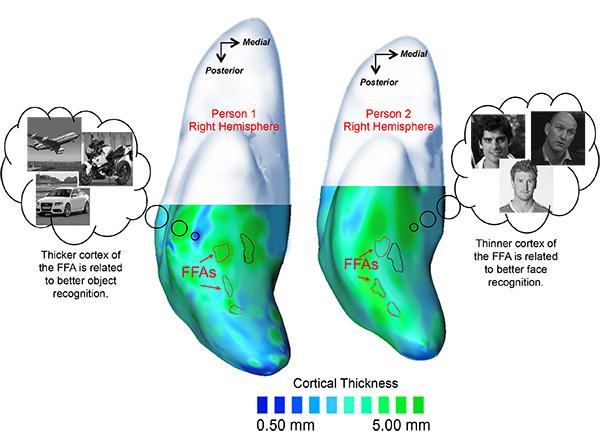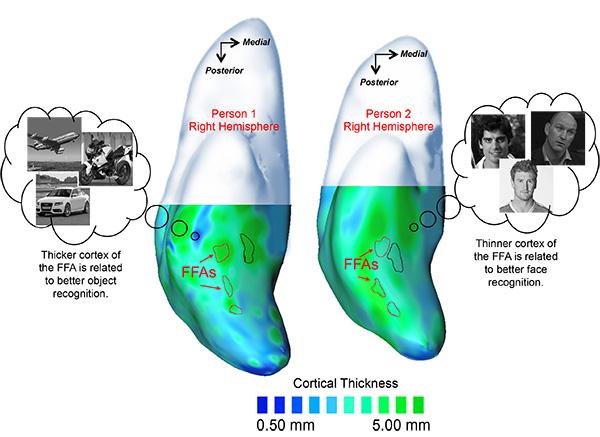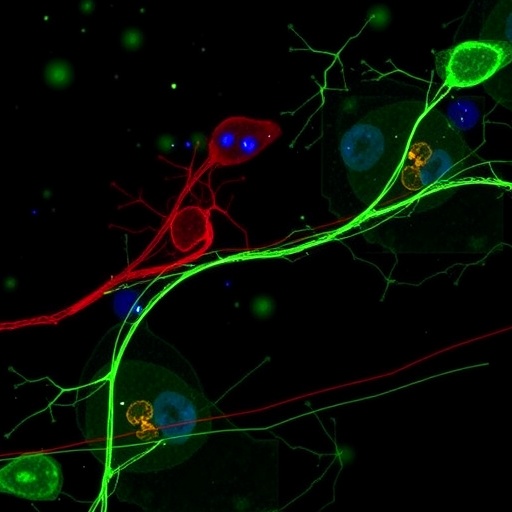
When you see a familiar face, when a bird-watcher catches a glimpse of a rare bird perched on a limb, or when a car-fancier spots a classic auto driving past, the same small region in the brain becomes engaged.
For almost two decades, neuroscientists have known that this area, called the fusiform face area (FFA), plays a vital role in the brain's ability to recognize faces and objects that an individual has learned to identify.
Now a new study, accepted for publication by the Journal of Cognitive Neuroscience, has taken this a step further by finding that the thickness of the cortex in the FFA – as measured using magnetic resonance imaging – can predict a person's ability to recognize faces and objects.
"It is the first time we have found a direct relationship between brain structure and visual expertise," said Isabel Gauthier, David K. Wilson Professor of Psychology at Vanderbilt University, who directed the study. "It shows more clearly than ever that this part of the brain is relevant to both face and object recognition abilities."
Surprising twist on cortical thickness
Relationships between cortical thickness and other types of processes, such as motor learning and acquisition of musical skills, have been observed before. The relationship seems relatively straightforward: the process of learning to type faster or play a violin causes the neurons in the relevant area of the cortex to make new connections, which causes the cortex to appear thicker. However, the link between cortical thickness and how well we recognize faces and objects turns out to have a surprising twist.
To establish this surprising relationship, Gauthier and her co-authors, post-doctoral fellow Rankin McGugin and Ana Van Gulick from Carnegie Mellon University, measured the ability of 27 men to identify objects from several different categories divided into two groups: living and non-living. They also tested subjects' ability at recognizing faces.
Using advanced brain-mapping techniques, the researchers were able to pinpoint the exact location of the FFA in each individual and to measure its cortical thickness. When they analyzed the results, the researchers found that the men with thicker FFA cortex performed generally better at identifying non-living objects while those having thinner FFA cortex performed better at identifying faces and living objects.
"It was really a surprise to find that the effects are in opposite directions for faces and non-living objects," said Gauthier. "One possibility that we are exploring is that we acquire expertise for faces much earlier than we learn about cars, and brain development is quite different earlier versus later in life."
There are significant sex differences in facial and object recognition, so the researchers would like to repeat the experiment using women to see if this same relation holds true. They would also like to start with a group of non-experts and then track how the thickness of their FFA cortex changes as they undergo the training process to become experts.
###
This research was supported by National Science Foundation grant SBE-0542013 and National Eye Institute grant R01-EY013441-06A2.





